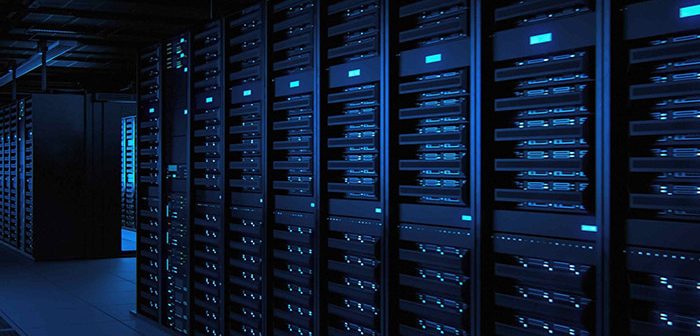
By Vivek Shitole
Abstract: This topic explores the transformative role of artificial intelligence (AI) and machine learning (ML) in enhancing security within continuous integration and continuous deployment (CI/CD) pipelines. By integrating AI/ML-driven controls, CI/CD environments can automate threat detection, accelerate incident response, and maintain compliance with data privacy regulations.
The study delves into the specific mechanisms through which AI/ML technologies improve the identification and remediation of security vulnerabilities, offering real-time protection while minimising human error. Additionally, it examines the complexities and challenges of adopting AI/ML, including the risks of over-reliance on automation and the necessity of ensuring data accuracy.
Practical use cases are discussed, demonstrating how AI/ML enhances security through continuous monitoring, automated access controls, and vulnerability management. As the field evolves, emerging trends such as edge computing and serverless architectures promise to further revolutionise CI/CD security. The paper concludes by highlighting both the current and future potential of AI/ML to fortify software development pipelines, while underscoring the importance of collaboration between DevOps and security teams to ensure balanced and effective security strategies.
This is the third of a three-part series over three weeks on the subject by the same author.
Best Practices
Implementing AI/ML-driven security controls in CI/CD pipelines requires a strategic approach to ensure both information security and data privacy. Below are some best practices that can help in achieving these objectives effectively.
-
Continuous integration and testing: Continuous integration (CI) involves merging code changes into a shared repository frequently and automatically testing each change upon commit or merge. This practice enables early identification of errors and security issues, which can be resolved promptly, thus minimizing risks in the development process. Automated tests should include security evaluations to spot potential vulnerabilities in the code.
-
Continuous delivery and deployment: The CI/CD pipeline is divided into four major phases: source, build, test, and deploy. Continuous delivery packages and stages the tested code for deployment, ensuring it passes several stages of checks and feedback loops before final acceptance. Continuous Deployment, an extension of CD, automates the deployment of code changes into production after they pass all required tests. This automation reduces human error and speeds up the release cycle while maintaining high security standards.
-
Separation of duties: To prevent unauthorized changes and reduce the risk of insider threats, it is crucial to implement the principle of separation of duties. Different individuals or teams should be responsible for various stages of the CI/CD pipeline. This practice fosters accountability and ensures that no single person has control over all aspects of the pipeline.
-
Collaboration between teams: Effective collaboration between DevOps and security teams is essential to embed security throughout the CI/CD process. However, 76% of security professionals find it challenging to cultivate a collaborative culture between these teams. Strategies to improve collaboration include obtaining buy-in and commitment from top management, providing training, and offering incentives. A ‘controlled shift left’ approach, which integrates security early in the development process, is also recommended.
-
Data privacy and security: While data privacy focuses on the confidentiality of information, data security also emphasises its integrity and accessibility. Organisations must demonstrate compliance with data privacy and security laws and standards. Implementing robust data security policies ensures that sensitive data is collected, stored, and used responsibly and legally.
-
Leveraging AI/ML for security: AI and machine learning can be harnessed to enhance security measures within the CI/CD pipeline. For instance, continuously experimenting with new implementations in machine learning systems can lead to improved model accuracy and performance. Techniques such as feature engineering and optimization of model architecture and hyperparameters can be used to refine security models. Additionally, vulnerability checkers and other AI-driven tools can identify and mitigate security risks effectively.
-
Regular assessment and validation: To maintain data accuracy and quality, it is essential to have processes in place that periodically assess and validate the data. Ensuring that data is obtained from reliable sources and validating its correctness helps in maintaining high data quality and mitigating risks associated with inaccurate information.
By adopting these best practices, organizations can enhance the security and efficiency of their CI/CD pipelines, ensuring robust protection of both their software and data assets.
Future Trends
The landscape of AI/ML-driven security controls in CI/CD is rapidly evolving, driven by advances in enterprise AI practices, technologies, frameworks, and use cases. Future trends are expected to shape this domain significantly, offering both opportunities and challenges for organizations aiming to strengthen their cybersecurity posture.
-
Emerging cybersecurity applications: One promising area for future research is the development of new infrastructures that support AI-based cybersecurity in the context of digital transformation and polycrisis. As AI continues to mature, it will enable more sophisticated threat detection and response capabilities, allowing cybersecurity teams to automate repetitive tasks and enhance the accuracy of their security measures.
-
Advanced AI methods and data representation: Advanced AI methods, including machine learning models, will be increasingly utilised to predict and optimize resource allocation within CI/CD pipelines. These models will improve the overall efficiency of DevOps processes by offering intelligent insights that balance imperfect scanning techniques with expert human knowledge.
-
Integration with emerging technologies: The integration of AI with other emerging technologies, such as edge computing and serverless architectures, will further influence the future of AI in DevOps. This trend will lead to the development of more sophisticated AI-driven monitoring and alerting tools, enhancing the ability to detect and mitigate vulnerabilities throughout the software development cycle.
-
Human approval for critical decisions: Despite the growing reliance on AI, human oversight remains crucial, particularly for critical decision-making processes. Ensuring human approval for significant actions can help prevent misinterpretations and errors that may arise from over-reliance on automated systems. This balance between automation and human intervention will be vital for maintaining robust security controls in CI/CD environments.
-
Addressing integration challenges: Integrating AI into existing CI toolchains poses several challenges, particularly in ensuring seamless integration without disrupting current workflows. Organizations will need to verify that AI tools can effectively work with their existing systems to maximize their benefits without compromising operational efficiency.
Conclusion
The integration of AI and ML-driven security controls into CI/CD pipelines represents a crucial step forward in modernizing software development practices. By automating threat detection, response, and remediation, these technologies offer significant advantages in enhancing security, improving response times, and maintaining regulatory compliance.
However, the deployment of AI/ML in CI/CD is not without challenges, including risks of misconfigurations, data quality concerns, and the need for a balance between automation and human oversight. As organisations continue to adopt these technologies, the future will see further advancements, particularly in the integration of AI/ML with emerging technologies such as edge computing and serverless architectures. Ultimately, AI/ML-driven security controls provide the necessary tools to create more secure, efficient, and resilient CI/CD environments, enabling organizations to meet the demands of today’s fast-paced and highly regulated software development landscape. However, achieving the right balance between automated security and human expertise will be critical in fully realizing the potential of these technologies.





